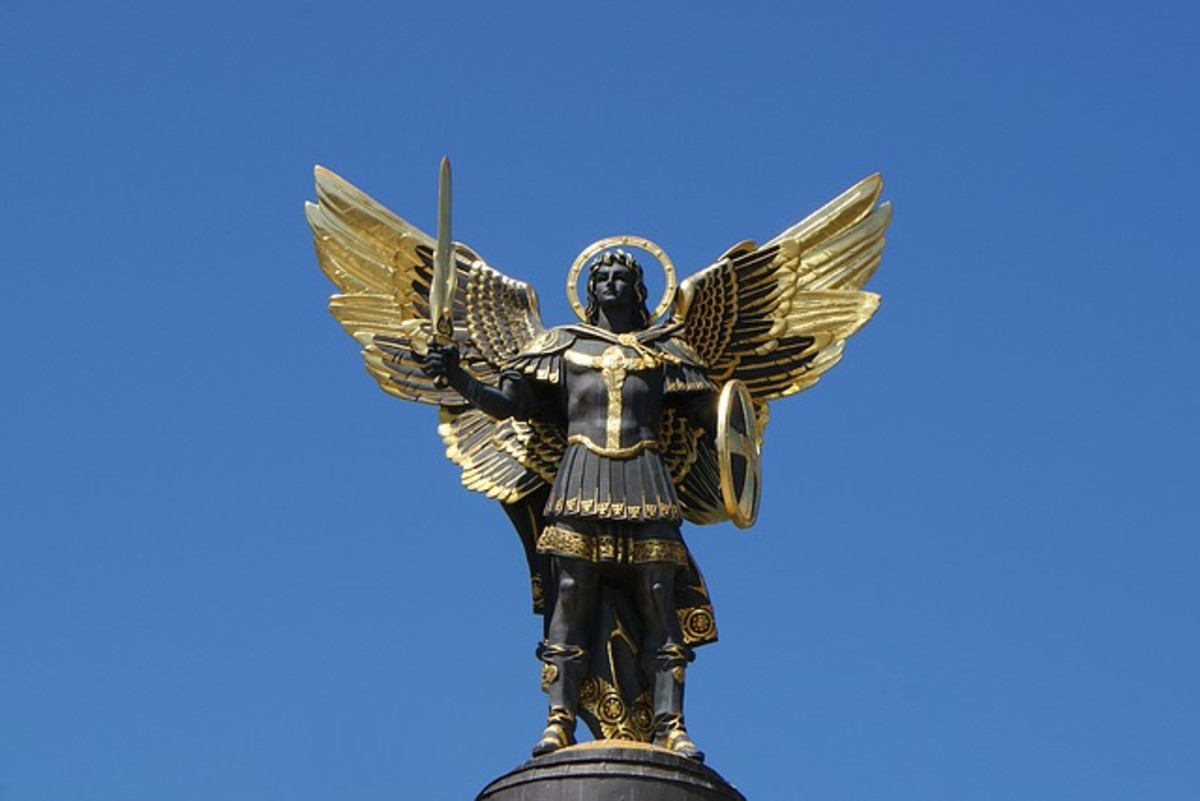The 12 Shiva Lingams of Light

Dvadash Shiva Jyotirlingams
The Dvadash Jyotirlingam Shrines or the 12 Temples enshrining the Hindu God Shiva in the form of a Jyotirlingam, have been held in reverence since time immemorial in the Indian system of beliefs. The twelve Jyotirlingams (lingams of light) are sacred shrines of Lord Shiva, and centers for his worship. They are known as "Svayambhu" meaning Self-manifested or that which is created by its own accord. These 12 lingams are said to have sprung up by themselves at these places and the temples were built there afterwards.
The southernmost of these is located at Rameswaram, while the northernmost is located in the snowy heights of the Himalayas at Kedarnath. These temples are closely linked with legends from the Puranas and are rich in history and tradition.
Dvadash Jyotirlingam
Shiva Jyotirlingams
Shiva Jyotirlingams (continued)
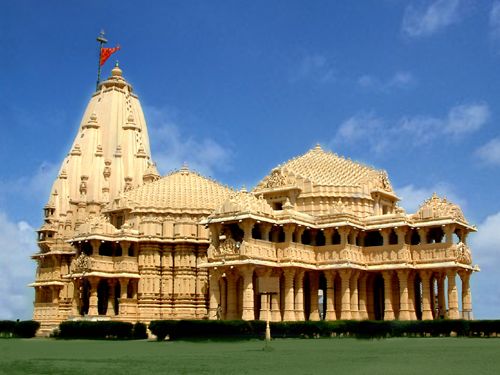
Somnath Jyotirlingam Temple
Somnath Patan, Gujarat
Somnath is the foremost of the 12 Jyotirlingam Shrines of Shiva, held in reverence throughout India and is rich in legend, traditions and history. It is
situated at Somnath Patan (the south coast of Saurashtra), near Veraval in (Prabhas Kshetra) Kathaiwad district in Gujarat. Somnath is considered to be the first of the 12 Jyotirlingas of Shiva and is a revered pilgrimage center in India.
Legend of Somnath Temple.
The Skanda Purana, in a chapter on Prabhasa Khanda, describes the emergence of this Jyotirlinga. Legend goes that the moon was married to the 27 daughters of Daksha Prajapati. Amongst all his wives, he had special love towards Rohini and neglected the others. Seeing the negligence of Chandra towards his other wives Prajapati Daksha cursed Chandra that he would lose his beauty and radiance. But because of a moon devoid of radiance and beauty the entire world became lifeless. A disturbed Chandra, came down to Prabhasa with Rohini and worshipped the Sparsa Linga of Somnath after which he was blessed by Shiva to grow and shine in the bright half. As the moon regained his light here, this town came to be known as Prabhasa. Brahma, one of the trinity, installed the Brahmashila, and paved way for the construction of the temple. On the request of the Chandrama and other gods Bhagwan Shankar assumed the name Somchandra (Jyotirlinga) and resided there eternally. He became famous by the name Somnath in the three worlds. Since, it was the Prabhas Kshetra where Bhagwan Shri Krishna performed all his Lilas. In this temple there is a small cave in which a lamp burns continuously.
The Skanda Purana describes the Sparsa Linga of Somnath as one bright as the sun, the size of an egg, lodged underground. The Mahabharata also refers to the Prabhasa Kshetra and the legend of the moon worshipping Shiva.
The Jyotirlingam in the Somnath Temple
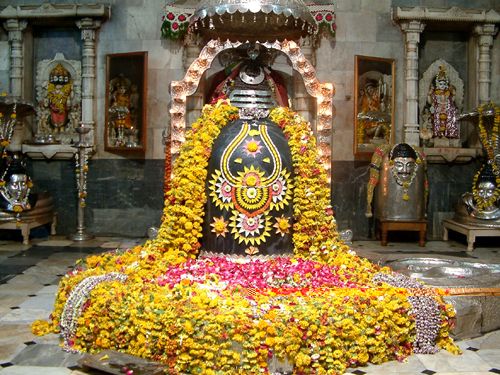
Somnath Jyotirlingam Temple Video
The Destruction of Somnath Jyotirlingam Temple - Ransacking and Rebuilding of Somnath Jyotirlingam Temple
Somnath Jyotirlingam has been destroyed and rebuilt a number of times in the history:
- Accounts of glory and wealth of Somnath by the Arab traveler Al Biruni prompted a visit by Mahmud of Ghazini who ransacked and destroyed the temple in 1025 CE. It was immediately rebuilt by King Bhima of Gujarat and King Bhoja of Malwa.
- Somnath temple was destroyed again by Alaf Khan, the general of Allauddin Khilji in 1300 CE. It was rebuilt again by King Mahipala of the Chudasama dynasty.
- Somnath shrine was destroyed yet again in 1390, 1490, 1530 and finally in 1701 by Aurangazeb. It was rebuilt with perseverance each time after it was destroyed.
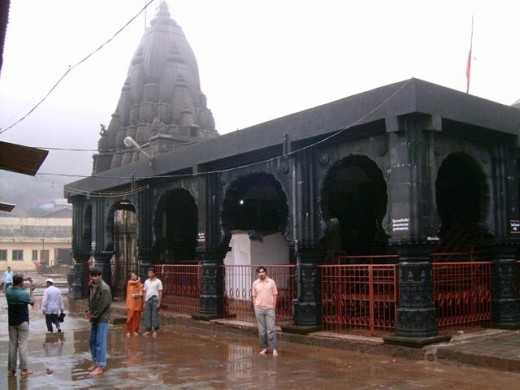
Bhimashankar Jyotirlingam Temple Video
The Jyotirlingam in the Bhimashankar Temple
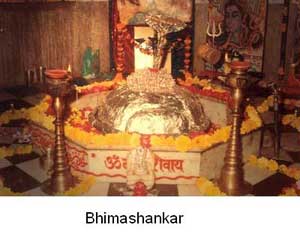
Bhimashankar Jyotirlingam Temple
Bhimashankar Temple in Pune, Maharashtra
The Bhimashankar Temple Jyotirlinga is situated in the ghat region of the Sahyadri hills in the village of Bhavagiri, 50-km north west of Khed, near Pune in Maharashtra. Bhima Shankar Temple lies on the banks of the river Bhima. Bhimashankar is also the source of the river Bhima, which flows southeast and merges with the Krishna River near Raichur. The other Jyotirlinga shrines in Maharashtra are Tryambakeshwar and Grishneshwar. It may be noted that according to the Shiv Purana the Bhimashankar Jyotirlinga is situated on the Mountain Brahmapur in district Kamrup, Assam.
Legend behind Bhimashankar Temple
According to the legends, once a demon called Bhima lived with his mother Karkati in the dense forests of Dakini, on the lofty ranges of the Sahaydris. It is said that Bhima was so cruel that every one was scared of him. But what tormented Bhima was his curiosity regarding his own existence. One day, Bhima urged his mother to tell him who his father was and why had he abandoned them in the wilderness of the forest. His mother revealed that he was the son of Kumbhakarna, the younger brother of the mighty King Ravana - the King of Lanka. Bhima's mother Kartaki also told him that Lord Vishnu in his incarnation as Lord Rama annihilated Kumbhakarna. This infuriated Bhima and he vowed to avenge Lord Vishnu.
Bhima performed severe penance to please Lord Brahma. The compassionate creator was pleased by the dedicated devotee and granted him immense prowess. With so much power, Bhima began to cause havoc in the three worlds. He defeated King Indra and conquered the heavens. He also defeated a staunch devotee of Lord Shiva - Kamrupeshwar and put him in the dungeons. All this angered the Gods and they along with Lord Brahma beseeched Lord Shiva to come for their rescue to which Lord Shiva agreed.
Tyrant Bhima asked Kamrupeshwar to worship him instead of Lord Shiva. When Kamrupeshwar refused, Bhima raised his sword to strike the Shiva Linga. But as soon as he raised his sword, Lord Shiva appeared before him in full magnificence. Then the terrible war began. Holy sage Narad appeared and requested Lord Shiva to put an end to this war. It was then that Lord Shiva reduced the evil demon to ashes and thus concluded the saga of tyranny. All the Gods and the holy sages present there requested Lord Shiva to make this place his abode. Lord Shiva thus manifested himself in the form of the Bhimashankar Jyotirlinga. It is believed that the sweat that poured forth from Lord Shiva's body after the battle formed the Bhimarathi River.
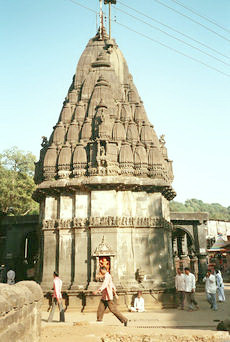
Structure of Bhimashankara Temple
Bhimashankara Temple is situated in picturesque extreme end of the Sahayadri Ranges and provides a wonderful view of the forts, the rivers and the hill stations around. The dense forests surrounding the high ranges also play an abode to the rare species of flora and fauna.
Bhimashakara Temple dates back to mid 18th century and is a composite of old and the new structures and is built in the Nagara style of architecture. The shikhara of the temple was built by Nana Phadnavis. Shivaji - the great Maratha ruler is said to have facilitated the carrying out of worship services. As with other Shiva temples in this area, the sanctum is at a lower level. The best time to visit the Bhimashankar Temple is said to be Maha Shivaratri as the temple organizes grand festivities on the occasion.
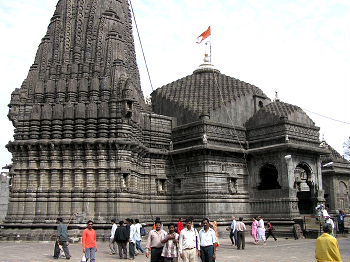
Trimbakeshwar Jyotirlingam Temple
Trimbakeshwar Temple in Nasik, Maharashtra
Shri Trimbakeshwar Temple is located at a distance of about 30-km from Nasik in Maharashtra near the mountain named Brahmagiri from which the river Godavari flows. Trimbakeshwar Temple is revered as one of the 12 Jyotirlinga shrines of Shiva and as the source of the river Godavari. Just as Ganga is known as Bhagirathi and is one of the most important river in North India, in the same way, Godavari is also known as Gautami Ganga and is the most sacred river in South India.
According to Shiv Purana, it is because of the earnest request of Godavari, Gautam Rishi and other gods that Lord Shiva agreed to reside here and assumed the famous name Trimbakeshwar. Interestingly, locals refer to the river here as Ganga and not as Godavari. All the heavenly Gods promised to come down to Nasik, once in twelve years, when Jupiter resides in the zodiac sign of Leo. On this a grand fair is organized at this place. Devotees take a holy bath in the Gautami Ganga and then seek the blessings of Trimbakeshwar.
Legend Behind Trimbakeshwar Temple
Legend goes that a sage name Gautam Muni resided on the Brahmagiri hill with his wife Ahilya. By virtue of his devotion, the sage received from Varuna, a bottomless pit from which he received an inexhaustible supply of grains and food. The other rishis, jealous of his fortune, arranged for a cow to enter his granary and caused it to die as Gowtam Rishi attempted to ward it off with a bunch of Darbha grass.
Gautam Rishi, therefore, worshipped Lord Shiva to bring the Ganga down to his hermitage to purify the premises. Pleased with devotion, Shiva requested Ganga to flow down and make Sage Gautam pure. After that Ganga flowed down. Lord Shiva told Ganga to stay there eternally for the good of everyone. All the Gods started singing the praises of Gautam Rishi, Ganga and Lord Shiva. On the request of all the Gods, Lord Shiva resided by the river Gautami by the name Trimbakeshwar (one of the Jyotirlingas). Hindus believe that Trimbak Jyotirlinga is one, which fulfills everyone's desires. It emancipates all from their sins and miseries.
Another popular legend behind Trimbakeshwar Temple is the legend of Lingodbhava manifestation of Shiva. It says once Brahma and Vishnu searched in vain to discover the origin of Shiva who manifested himself as a cosmic column of fire. Brahma lied that he had seen the top of the column of fire and was hence cursed that he would not be worshipped on earth. In turn Brahma cursed Shiva that he would be pushed underground. Accordingly, Shiva came down under the Brahmagiri hill in the form of Tryambakeshwar. Trimbakeshwar Temple is the only place where Shivlinga is not out but it's inside the floor.
Some scholars say that Goddess Parvati also came down along Lord Shiva and Ganga. The place is therefore called Tryambakeshwa (three lords). Others believe that the place is so called because of the presence of three Shivlinga of Brahma, Vishnu and Mahesh. The Shivlinga of Lord Mahesh has always-flowing water among the three Shivlingas.
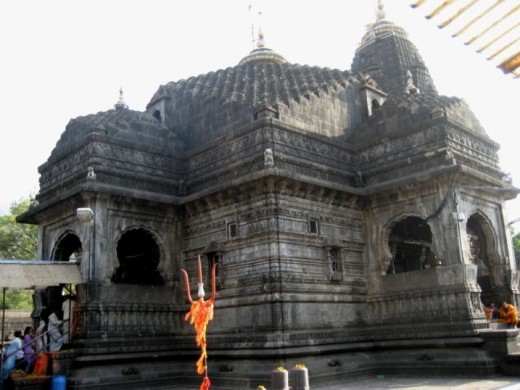
Trimbakeshwar Jyotirlingam Temple Video
The Jyotirlingam in the Trimbakeshwar Temple
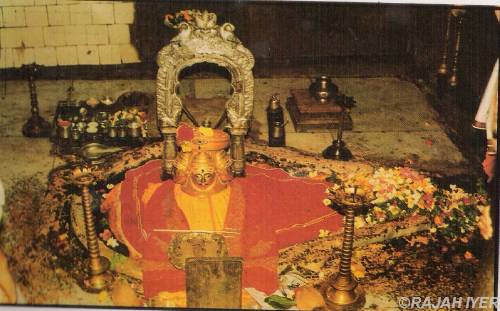
Structure of Trimbakeshwar Temple
Trimbakeshwar Temple is an ancient shrine, however the current structure is a result of the reconstruction efforts undertaken by the Peshwa Balaji Bajirao in mid 18th century. The temple is built of black stone in the Nagara style of architecture and is enclosed in a spacious courtyard. The sanctum internally a square and externally a stellar structure houses a small Shivalingam - Tryambaka. The sanctum is crowned with a graceful tower, embellished with a giant Amalaka and a golden kalasha. In front of the garbagriha and the antarala is a mandap with doors on all four sides. Three of these doorways are covered with porches and the openings of these porches are ornamented with pillars and arches. Curvilinear slabs rising in steps form roof of the mandapam. The entire structure is ornamented with sculptural work featuring running scrolls, floral designs, and figures of gods, yakshas, humans and animals.
The Shivalingam is seen in a depression on the floor of the sanctum. Water constantly oozes out from the top of the Shivalingam. Usually, the Shivalingam is covered with a silver mask but on festive occasions a golden mask with five faces, each with a golden crown covers it.
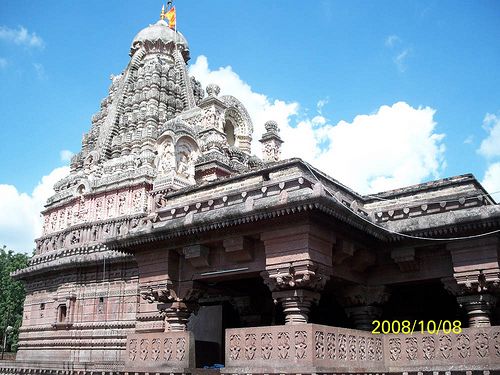
Grishneshwar Jyotirlingam Temple
Grishneshwar Temple in Daulatabad, Maharashtra
The Grishneshwar Temple is an ancient pilgrimage site revered as the abode of one of the 12 Jyotirlinga manifestation of Lord Shiva. The Grishneshwar Jyotirlinga shrine is located at a village called Verul, which lies 20 km from Daulatabad (near Aurangabad in Maharashtra) and approximately 100 kms from Manmad station. Located close to Daulatabad (once known as Devagiri) is the popular tourist attractions Ajanta - Ellora.
The town of Ellora has several rock cut monuments from the 1st millennium CE. The Grishneswar Temple was constructed by Ahilyabhai Holkar who also re-constructed the Kashi Viswanatha Temple at Varanasi and the Vishnu Paada Temple at Gaya. The Grishneshwar Temple is also known by several other names like Kusumeswarar, Ghushmeswara, Grushmeswara and Grishneswara..
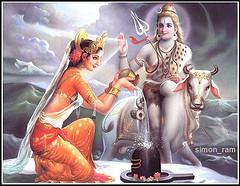
Grishneshwar Jyotirlingam
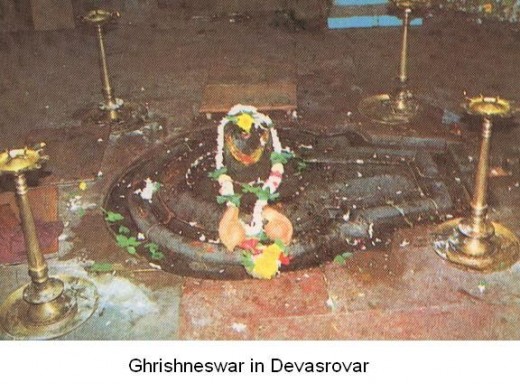
Legend Behind Grishneshwar Temple
According to Shivapuran, in the southern direction, on a mountain named Devagiri lived a Brahmin called Brahmavetta Sudharm along with his wife Sudeha. The couple did not have a child because of which Sudeha was sad. Sudeha prayed and tried all possible remedies but in vain. Frustrated of being childless, Sudeha got her sister Ghushma married to her husband. On the advice of her sister, Ghushma used to make 101 lingas, worship them and discharge them in the near by lake.
With the blessings of Lord Shiva, Ghushma gave birth to a baby boy. Because of this, Ghushma became proud and Sudeha started feeling jealous towards her sister. Out of jealously, one night she killed Ghushma's son and threw him in the lake where Ghushma used to discharge the lingas.
Next morning, Ghushmas and Sudharm got involved in daily prayers and ablutions. Sudeha too, got up and started performing her daily choirs. Ghushma's daughter-in-law, however, saw stains of blood on her husband's bed and parts of the body drenched in blood. Horrified, she narrated everything to mother-in-law Ghushma who was absorbed in worshipping Shiva. Ghushma did not deter. Even her husband Sudharma did not move an inch. Even when Ghushma saw the bed drenched in blood she did not break down and said he who has given me this child shall protect him and started reciting 'Shiva-Shiva'. Later, when she went to discharge the Shivalingas after prayers she saw her son coming. Seeing her son Ghushma was neither happy nor sad. At that time Lord Shiv appeared before her and said - I am pleased with your devotion. Your sister had killed your son. Ghushma told Lord to forgive Sudeh and emancipate her. Pleased with her generosity, Lord Shiva asked her another boon. Ghushma said that if he was really happy with her devotion then he should reside here eternally for the benefit of the multitudes in form of a Jyotirling and may you be known by my name. On her request, Lord Shiva manifested himself in the form of a Jyotirling and assumed the name Ghushmeshwar and the lake was named as Shivalaya thereafter
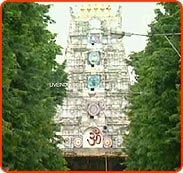
Mallikarjun Jyotirlingam Temple
Mallikarjun Temple in Andhra Pradesh at Shri Shaila
Mallikarjun Temple in Andhra Pradesh Mallikarjun Temple is situated on Shri Shaila Mountain by the banks of the Patal Ganga, Krishna River in the southern state of Andhra Pradesh. Also known as Kailash of the South, Mallikarjuna constitutes one of the 12 Jyotirlingam shrines of Shiva and is one of the greatest Shaivaite shrines in India. The presiding deities of Mallikarjuna Temple are Mallikarjuna (Shiva) and Bhramaramba (Devi). Every year there is a fair organized on account of Mahashivratri.
Bhramaramba Shrine
Located adjacent to the Mallikarjun Temple is a shrine dedicated to Goddess Jagdamba who is known as Bhramaramba here. The Bhramaramba shrine is considered to be of great significance. Legend has it that Durga is said to have assumed the shape of a bee and worshipped Shiva here, and chose this place as her abode.
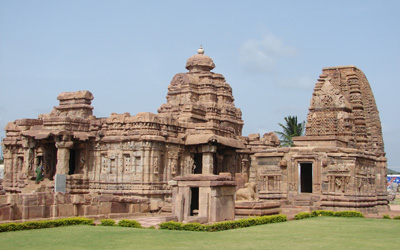
Architecture of the Mallikarjun Temple
The architecture of the ancient Mallikarjun Temple is very beautiful and intricate. The temple has fort like walls, towers and a rich endowment of sculptural work. The huge temple is built in the Dravidian style with lofty towers and sprawling courtyards and is considered to be one of the finest specimens of Vijayanagar architecture. Temple of Tripurantakam, Siddavatam, Alampura and Umamaheswaram located in the vicinity of Mallikarjuna Jyotirlina are considered to be the four gateways to Sri Sailam.
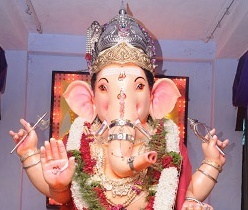
Malikarjuna Jyotirlingam Darshan
Legend of Mallikarjun Jyotirlingam
According to Shiva Purana, when Lord Ganesh was married of before his Kartikeya, and because of this brother Kartikeya became angry. Despite being stopped and consoled by his parents Shiv-Parvati, Kartikeya went away to the Kraunch Mountain. Even the Gods went and tried consoling Kartikeya but all their efforts were in vain. Because of this incident Shiv-Parvati were very sad and both decided that they would themselves go to Kraunch Mountain. However, when Kartikeya came to know that his parents have arrived, he went away. Eventually Lord Shiva assumed the form of Jyotirlinga and resided on that mountain by the name of Mallikarjuna. Mallika means Parvati, while Arjuna is another name of Shiva. In this way both Shiva and Parvati came to reside in this linga. It is said that by merely seeing the tip of mountain one is emancipated from all his sins and worries. The person becomes free from the vicious cycle of life and death.
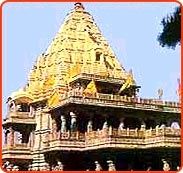
Mahakaleshwara Jyotirlingam Temple
Mahakaleshwara Temple in Ujjain
Mahakaleshwara Temple is located by the banks of river Kshipra, in the dense Mahakal forests in Ujjain, Madhya Pradesh. It is an important Shaivaite pilgrimage centre in North India and is revered as one of the 12 Jyotilinga manifestations of Shiva.
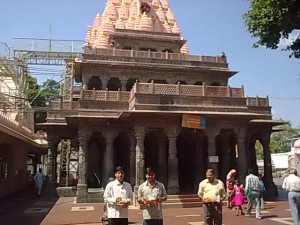
Legend Behind Mahakal Jyotirlingam
According to an episode narrated in Puranas, a five-year-old boy named Shrikar was enthralled seeing the devotion of King Chandrasena of Ujjain towards Lord Shiva. Shrikar took a stone and by considering it a linga started worshipping it regularly. Others thought that his worship as merely a game and tried to dissuade him in all ways. But all the efforts went in vain. On the contrary, devotion of Shrikar increased by every passing day. Pleased by the boy's devotion Lord Shiva assumed Jyotirlinga form and resided in the Mahakal forest.
According to another popular legend related to Mahakal Temple, a demon by name, Dushana tormented the residents of Avanti. Shiva appeared from the ground and vanquished the demon. Then, upon the request of the inhabitants of Avanti, Shiva took up a permanent abode here as Mahakaleshwara Jyotirlinga.
Architecture of Mahakal Temple
Bhagwan Mahakaleshwar Temple is located near a lake and has a spacious courtyard surrounded by massive walls. The temple has five levels, one of that is underground. Brass lamps light the way to the underground sanctum or Garbha Griha where the Jyotirlinga is situated. The Linga is quite big in size and is encircled by a snake of silver. On one side of the Linga there is the idol of Lord Ganesha while on the other side, idols of Goddess Parvati and Kartikeya are installed. The shikhara of temple is adorned with sculptural finery.
Significance of Mahakaleshwara Temple
Mahalakesheshwar Temple is consider significant by the Hindus for the following reasons:
Mahakaleshwara Temple in Ujjain is regarded amongst the seven holy places that can liberate a human. The other six Mukti-Sthal being Ayodhya, Mathura, Haridwar, Benares, Kanchipuram and Dwarka. All devotees that come to participate in the famous Kumbh Mela organized year on the banks of the Kshipra River consider it important to seek blessings of Lord Mahakaleshwar. The Mahakaleshwar Temple has also been referred to in the Tamil hymns of the Nayanmar saints of the 1st millennium CE.
Mahakaleshwar Jyotirlingam
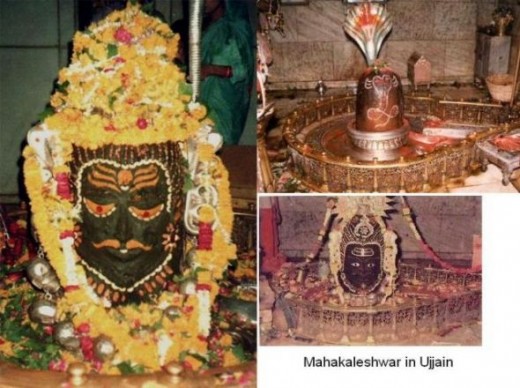
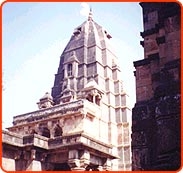
Omkareshwar Jyotirlingam Temple
Omkareshwar Temple in Madhya Pradesh
Omkareshwar Temple is situated on the mountain Mandhata by the banks of Narmada River in the Malva area in Madhya Pradesh. Omkareshwar Temple is one of the 12 revered Jyotirlinga shrines of Shiva. The temple is closely linked with Mammaleshwar Temple (situated on the south of river Narmada) as both the forms of Shiva have been counted as one.
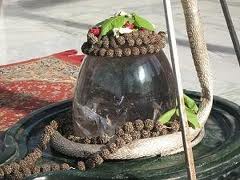
Legend behind Omkareshwar Temple
Shiva Purana describes the greatness of Omkareshwar and Mammaleshwar. It says, two sons of the sun dynasty Mandhata - Ambarish and Mucchkund practiced severe penance and austerities here and pleased Lord Shiva. They also performed great religious sacrifices in this place because of which the mountain is named Mandhata.
Another popular legend says that once upon a time Vidhya Parvat practiced severe penance and worshipped Parthivarchana along with Lord Omkareshwar for nearly six months. As a result Lord Shiva was pleased and blessed him with the desire boon. On the sincere request of all the gods and the sages Lord Shiva made two parts of the lings. One half being Omkareshwara and the other Amaleshwara or Amareshwar.
Some scholar say, King Mandhatha of the Ishvaku clan is believed to have worshipped Shiva here. Besides, Govinda Bhagavatpaada, the Guru of Shankaracharya is believed to have lived in a cave here.
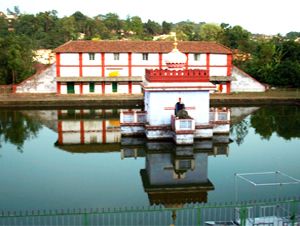
Omkareshwar Jyotirlingam
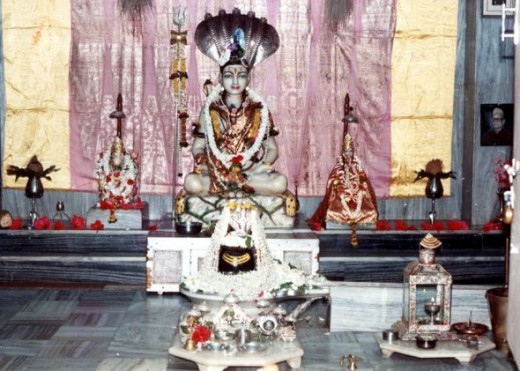
Architecture of Omkareshwar Temple
Omkareshwar Temple is located at a distance of about 12 miles from Mortakka in Madhya Pradesh. A special feature of the location of Omkareshwar Temple is that the river Narmada branches into two and forms an island Mandhata or Shivapuri in the center. The shape of the island resembles that of the visual representation of the Omkara sound, Om. There are two temples here, one to Omkareshwar and one to Amareshwar.
The Omkareshwar Temple is built in the Nagara style and is characterized by a lofty shikhara. There are also shrines to Annapurna and Ganesha here. Before entering the temple one has to pass through two rooms. The Omkareshwar is not affixed to the ground but is naturally installed there. There is always water around it. The significance of this linga is that the linga is not situated below the cupola. The idol of Lord Shiva is situated on the top of the temple. The temple can be reached by ferry from the banks of the river. A huge fair is organized here on the day of Kartik Poornima.
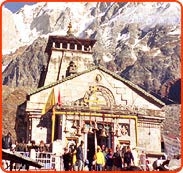
Kedarnath Jyotirlingam Temple
Kedarnath Temple in Himalayas
One of the holiest pilgrimages for the Hindus, Kedarnath Temple Jyotirlinga is located in the picturesque surroundings of Rudra Himalaya Range at a height of 12000 feet on a mountain named Kedar. Near Kedarnath is the source of the river Mandakini that joins Alakananda at Rudraprayag. This place is approximately 150 miles away from Hardwar and 132 miles north of Hrishikesh and is accessible by foot.
The temple at Kedarnath enshrining the Jyotirlingam of Shiva opens only 6 months a year (April-November) when the sun enters the zodiac sign of Aries and it is closed when the sun enters Scorpio. The priests then go to Ukhimath, where the worship of Kedareshwara is continued during the winter season.
Tradition has it that when undertaking Kedarnath Yatra pilgrims first visit Yamunotri and Gangotri and bring with them the holy waters from the sources of the rivers Yamuna and Ganga and offer abhishekams to Kedareshwara. The traditional pilgrim route is Haridwar - Rishikesh - Devaprayag - Tehri - Dharasu - Yamunotri - Uttar Kashi - Gangotri - Triyugnarayan - Gowrikund and Kedarnath. The alternative route to Kedar from Rishikesh is via Devprayag, Srinagar, Rudraprayag and Ukhimath.
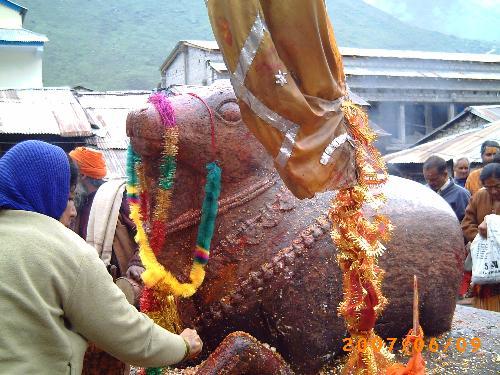
Legend Behind Kedarnath Temple
Legend goes that Nara and Narayana - two incarnations of Vishnu performed severe penance in Badrikashraya of Bharat Khand, in front of a Shivalingam fashioned out of earth. Pleased with their devotion, Lord Shiva appeared in front of them and said that they may ask for a boon. Nar and Narayan requested Shiva to take up a permanent abode as a Jyotirlingam at Kedarnath so that all people who worship Shiva shall be freed from their miseries.
According to yet another popular legend related to Kedar Temple, Goddess Parvati worshipped Kedareshwar to unite with Shiva as Ardhanareeswarar. Besides, the Pandavas are believed to have visited this area several times. Arjuna is believed to have come here to pray to Shiva to obtain the coveted Pasupataastra. The other Pandavas are believed to have come here in search of him, where Draupadi came across the heavenly lotus Kalyana Saugandikam, and requested Bhima to bring here some more of the same. It was during his venturing out to seek these flowers that Bhima met Hanumaan.
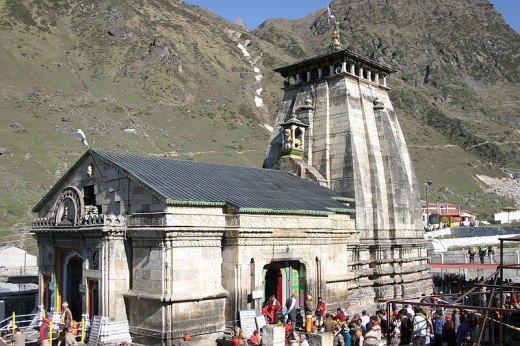
Architecture of Kedernath Temple
Structure of Kedarnath Temple
Kedarnath Shrine is scenically placed amidst the lofty, snow - covered mountains and grassy meadows covering the valleys. Immediately behind the temple is the high Keadardome peak, which can be sighted from great distances. It is believed that the temple of Kedarnath was constructed by the Pandavas. At the entrance of the temple is the statue of Nandi, the divine bull of Shiva. Walls inside the temple are exquisitely carved with images. The revered Shiva Lingam housed in the temple is in the unusual pyramidal form.
Significance of Kedarnath Temple
Located in the lofty Himalayas, Kedarnath Temple is one of the best known Shivasthalams in India and is considered to be one of the most sacred pilgrimage centers of the country. It is believed that by praying to Kedareshwar, one can get all his desires fulfilled. Importance of the shrine can be further understood from the beliefs that Upamanyu prayed to Lord Shiva in this place in Satayuga while in Dwapar, the Pandavas worshipped Lord Shiva here. Even the spiritual leader Adi Sankaracharya is closely associated with Kedarnath.
Kedarnath Jyotirlingam
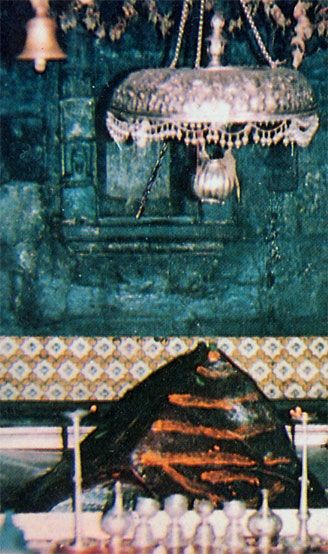
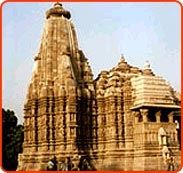
Kasi Vishwanath Jyotirlingam
Kasi (Varanasi) Temple in Uttar Pradesh
Varanasi Vishwanath Temple is considered the most celebrated and revered pilgrimage site in India The Vishwanath temple in Benares in Uttar Pradesh is the goal of the thousands of pilgrims that visit this ancient city. It is located amidst the crowded lanes in the holy city of Varanasi also known as Kashi and Benares. The Vishwanath Temple enshrines one of the twelve Jyotirlingams of Lord Shiva. It is believed that Varanasi is the point at which the first Jyotirlinga, the fiery pillar of light by which Shiva manifested his supremacy over other gods, broke through the earth's crust and flared towards the heavens. More than the Ghats and even the Ganga, the Shivalinga installed in the temple remain the devotional focus of Varanasi. Millions of pilgrims converge here to perform an abhishekam to the sacred Jyotirlingam with sacred water of river Ganga.
Significance of Vishwanath Temple
Also famous by the name of Shiv Vishwanath Kashi, Shri Vishweshwar Temple is said to be dear to Lord Shiva. Hindus believe that those who come and die here attain liberation. It is said that Lord Shiva gives the Tarak Mantra to the ones who are going to die here. Some also believe that the Lord resides here and is the giver of liberation and happiness. The one who prays and worships Vishweshwar with devotion attains all his desires and one who incessantly recites his name attains all siddhis and finally gets liberated.
History of Vishwanath Temple
The famous Vishwanath Temple has been rebuilt several times. The original was supposed to have been built in 1490. However, the original Jyotirlinga of Kashi Vishwanath is a not available. The old temple was destroyed as a result of the Mughal invasion and Aurangazeb built a mosque in place of it. The ancient idol of Vishweshwar is situated in Jnana-Vapi. Even today the western wall of the mosque show the remnants of a temple which had very intricate and fine artwork on it. Both the Kashi Vishwanath and the Gyanvapi Mosque are adjacent to each other
The latest structure standing here dates back to the 18th century. It is said that once Lord Shiva came in the dream of Rani Ahilya Bai Holkar of Indore. She, being a devotee of Lord Shiva, got the current temple built in 1777 at a distance from the original one
Kashi Vishwanath Jyotirlingam
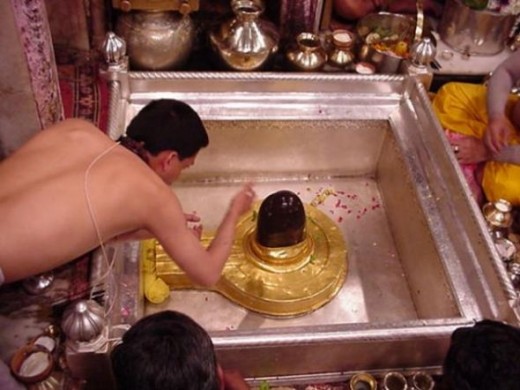
Kashi Visvanath Jyotirlingam Darshan
Architecture of Kasi Vishwanath Temple
Structure of Shri Vishwanath Jyotirlinga Temple
Shri Vishwanatha Temple is situated amidst the crowded lanes of Varanasi on the banks of the rive Ganga. The temple can be approached from a lane called Vishwanatha lane. Beside its religious significance, the temple is also an architectural marvel. The magnificent edifice offers a breathtaking view to the onlooker. The Kashi Vishwanath Temple is also popularly known as the 'Golden Temple' due the gold plating done on its 15.5-meter high spire. One tonne of gold donated by Maharaja Ranjit Singh has been used in the gold plating of the spire.
Inside the courtyard is the temple of Vishwanatha surrounded by many subsidiary shrines. A well, called Jnana Vapi i.e. ‘wisdom well’ located to the north of the main temple. The Vishwanatha temple consists of a mandapa and a sanctum. Inside the sanctum a linga is set into the center of the floor in a square silver altar. The Linga is of black stone. Though the interior of the temple is not large and elaborate it presents the peaceful atmosphere ideal for worship.
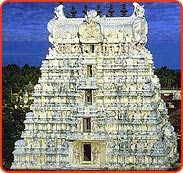
Rameshwaram Jyotirlingam Temple
Rameshwaram Temple in Tamil Nadu
Rameshwaram Temple is situated in the island of Rameswaram, off the Sethu coast of Tamil Nadu and is reached via the Pamban Bridge across the sea. The huge temple is known for its long ornate corridors, towers and 36 theerthams. Rameshwaram Jyotirlinga represents the southernmost of the 12 Jyotirlingams of India and has been a time honored pilgrimage center held on par with Banaras. Rameshwaram Temple Jyotirlinga is associated closely with the Ramayana and Rama's victorious return from Sri Lanka.
Significance of Rameshwaram Temple Jyotirlinga
The significance of Rameshwaram Temple Jyotirlinga has been described through a shloka in Manas:
Je rameshwar darshan kari hahi |
The tanu taji mam loka sidaari hahi ||
Meaning: Those who go to Rameshwar and seek my blessings, shall always reside in Shivloka.
It is also said that there is greatness associated with the ceremonial bath given to the linga by water of the Ganga.
Legend behind Rameshwaram Temple
According to a popular legend, it was Lord Rama who installed this Linga here. Story goes that when Lord Ram was on his way to attack Ravana, he reached this place where he made a linga of sand and worshipped it. It is said that when Lord Rama was drinking water on the seashore there was a celestial proclamation - "You are drinking water without worshipping me". Listening to this Lord Rama made a linga of sand and worshipped it and asked to be blessed so that he could vanquish Ravana. Lord Shiva blessed him accordingly. He also requested Lord Shiva to reside eternally here so that entire mankind should benefit from it. Shiva then manifested himself as the Linga and got installed there for eternity.
According to yet another legend, while returning to Ayodhya, Ram worshipped Lord Shiva in the form of a Shiva Lingam made of earth by Sita. It is said that Hanuman was entrusted with the task of bringing an image of Viswanathar from Banaras. Anticipating delay in Hanuman's return from Benares, Rama offered worship to a Shivalingam at a pre-chosen auspicious moment. This lingam is referred to as Ramalingam and the town is known as Rameswaram.
There is yet another Shivalingam here - Viswanathar said to have been brought by Hanuman from Banares. This Shivalingam is referred to as Kasilingam and Hanumalingam. Prayers are offered to Viswanathar before they are offered to Ramanathaswamy.
Rameshwaram Jyotirlingam
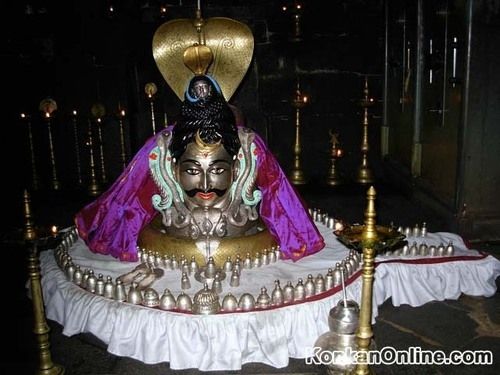
Rameshwaram Jyotirlingam Darshan
Architecture of Rameshwaram Temple
Structure of Rameshwaram Temple
Rameswaram Temple is spread over an area of 15 acres and has lofty gopurams, massive walls and a colossal Nandi. Rameswaram Jyotirlinga also boasts of a 4000 feet long pillared corridor with over 4000 pillars, supposedly the longest in the world. The carved granite pillars are mounted on a raised platform. Worth noticing fact about this corridor is that the rock is not indigenous to the island and is said to have been brought in from elsewhere in Tamil Nadu across the sea.
The eastern Rajagopuram towers to a height of 126 feet and has nine levels. The Western Rajagopuram is also quite impressive though not as tall as the Eastern one. The temple also has several mandapams with mini shrines to other deities. There is a huge Nandi measuring 12 feet in length and 9 feet in height with the idols of Viswanatha Naicker and Krishnama Naicker. The lingams are housed in the inner section of the Ramalingeshwara. High walls enclose the temple, forming a rectangle with huge pyramidal gopura entrances on each side.
Shiva MP3's
Vaidyanath Jyotirlingam Temple
Vaidyanath Temple in Deogarh in Bihar
Vaidyanath Temple, also called Vaijnath Temple and Baidyanth Temple is located at Deogarh in the Santal Parganas region of Bihar in the south west of Keeul Station. Baidyanath shrine is revered as one of the twelve Jyotirlingams of Shiva. It may be noted that some schools of thought believe Vaidyanath near Parali in Andhra Pradesh to be the Vaidyanatha Jyotirlingam.
Devotees of Lord Shiva believe that by sincere worship of Vaijnath Jyotirlinga a person is relieved of all worries and miseries in life. It is also said that by worshipping in the shrine a person attains Moksha and all types of happiness. As a tradition, devotees carry 'Kanwars' on their shoulders and complete their travel here.
Great Shiva Books
Legend Behind Vaidyanath Temple
Legend has it that demon King of Lanka, Ravana meditated upon Lord Shiva, as he wanted to request him to come over to Sri Lanka and make his capital invincible. It is said that Ravana attempted to lift Mount Kailash and take it with him to his capital. However, Lord Shiva crushed it with his finger. Ravana prayed to him and sought his mercy, after which Bhagwan Shiva gave him one of the twelve Jyotirlingams on the condition that if it were placed on the ground it shall fix itself to the ground and shall remain there for eternity. Ravana thanked Lord Shiva and holding the Linga carefully started of to the Lanka. However, Varuna the God of Water, entered his belly and caused him to feel an urgent need to relieve himself. Vishnu then came down in the form of a lad and volunteered to hold the Jyotirlingam as he relieved himself. Before Ravana returned, Vishnu placed the Jyotirlingam on the ground and it became rooted to the spot. A disappointed Ravana offered severe penance to Shiva here, and cut off nine of his heads. Shiva revived him and joined the heads to the body, as if by the work of a Vaidya or a physician, hence this Jyotirlingam goes by the name Vaidyanath.
According to another legend, Vaidyanath is one of the 52 Shakti Pitha shrines of Sati. It is believed that the heart of Sati fell here, when her half burnt body being carried by Shiva at the end of Daksha's Yagna was chopped to pieces by Vishnu's discus.
Some people believe that this temple was re-discovered by a cowherd Baiju and hence named Baijnath.
Architecture of Vaidyanath Temple
Structure of Vaidyanath Jyotirlinga
Vaidyanath Temple at Deogarh houses a spacious courtyard bound by stone walls. In the temple complex are twenty-two other temples. The Baijnath or Vaidyanath temple faces east. The top of the Shiva Lingam is slightly broken, keeping with the legend that it chipped away when Ravana tried to uproot it. Near the temple is the Shivaganga Lake.
Vaidyanath Jyotirlingam
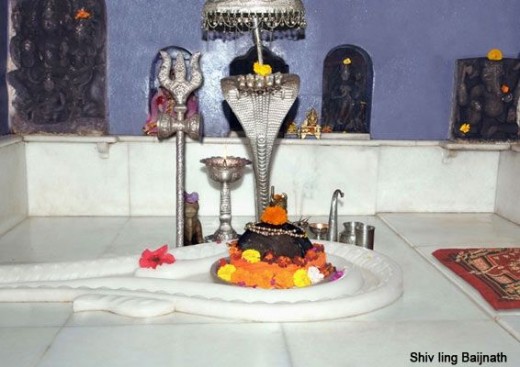
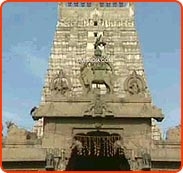
Nageshwar Jyotirlingham Temple
Nageshwar Temple in Dwarka in Gujarat
Nageshwar Temple or Nagnath Temple is located on the route between Gomati Dwarka and the Bait Dwarka Island on the coast of Saurashtra in Gujarat. The Jyotirlinga enshrined in the Temple of Nagnath is known as Nageshwar Mahadev and attracts thousands of pilgrims all round the year. This powerful Jyotirlinga symbolizes protection from all poisons. It is said that those who pray to the Nageshwar Linga become free of poison. The Rudra Samhita sloka refers to Nageshwar with the phrase 'Daarukaavane Naagesham'.
Legend Behind Nageshwar Temple
According to Shiv Purana, a Shiva devotee by name Supriya was attacked by a demon Daaruka while in a boat. The demon imprisoned him along with several others at his capital Daarukaavana where he resided with his wife Daaruki. Supriya advised all prisoners to recite the mantra 'Aum Namaha Shivaya'. When Daruk came to know about this he ran to kill Supriya. Instantly Lord Shiva appeared in the form of a Jyotirlingam and vanquished the demon with the Paasupata Astram.
This Jyotirlinga manifestation of Shiva is worshipped as Nageswara. Two other sites in India, one near Audhgram near Purna in Andhra Pradesh and another near Almora in Uttar Pradesh also enshrine temples to Nageswara Jyotirlingam. According to the Shiv Purana, any one who ever with devotion reads the birth and greatness of this Jyotirlinga shall beget all material happiness and divine status in the end.
Architecture of Nageshwar Temple
Structure of Nageshwar Temple
Nageshwar Mahadev Sivalingam is facing South while the Gomugam is facing east. There is a story for this position. A devotee by name Naamdev was singing bhajans in front of the Lord. Other devotees asked him to stand aside and not hide the Lord. To this Naamdev asked them to suggest one direction in which the Lord does not exist, so that he can stand there. The enraged devotees carried him and left him on the southside. To their astonishment, they found that the Linga was now facing South with the Gomugam facing east.
Shiva Lingams Videos on Amazon
Nageshwar Jyotirlingam
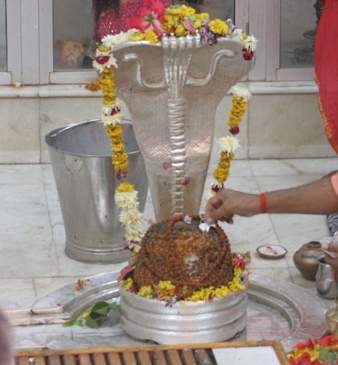





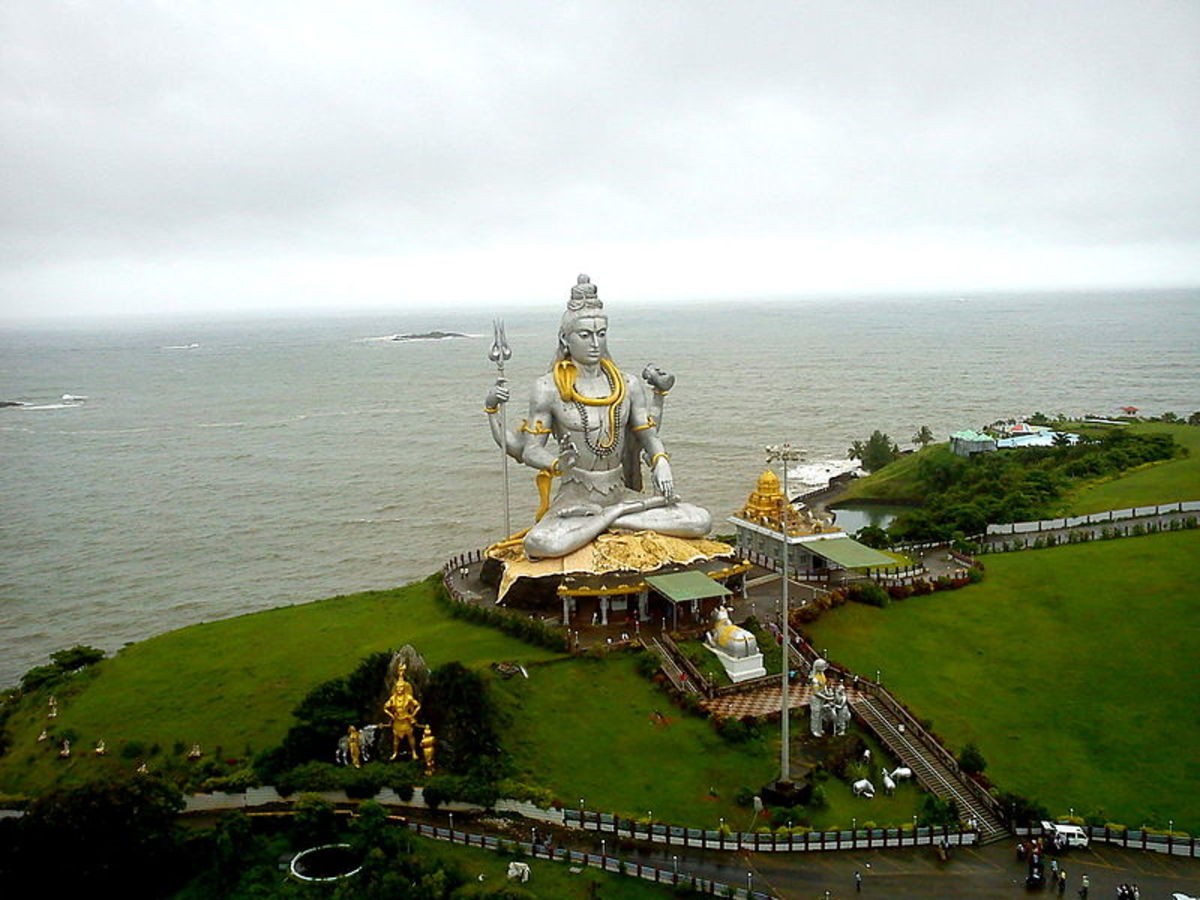
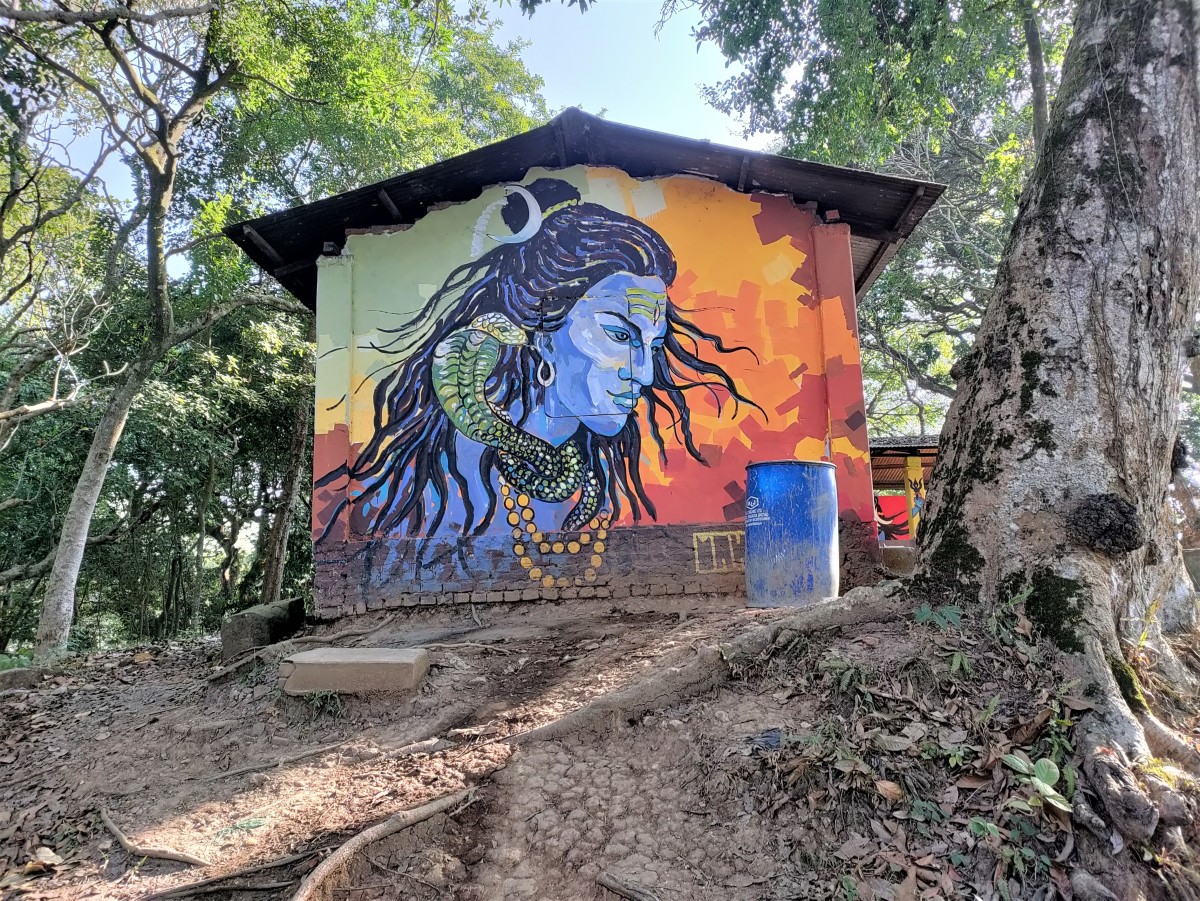
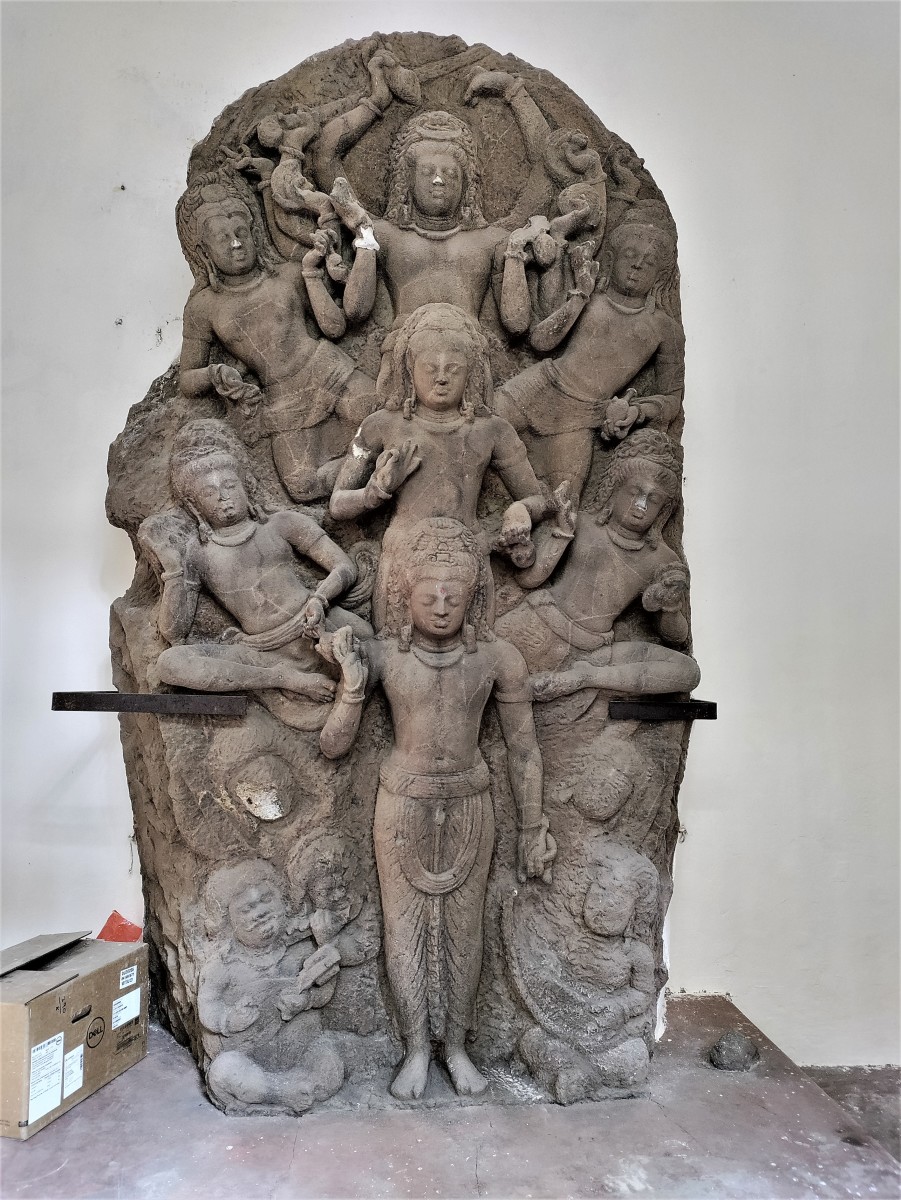
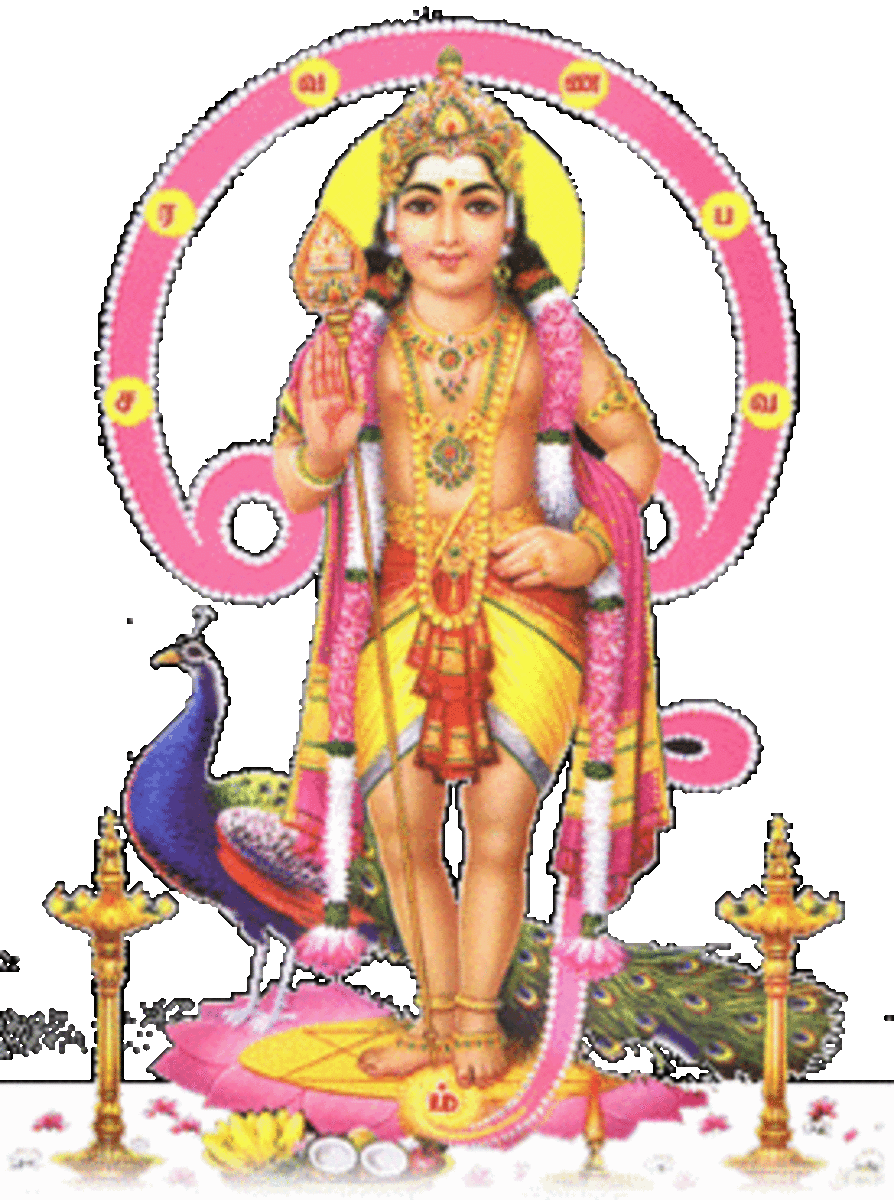
![How to Plan Chardham Yatra [A Complete Travel Guide] How to Plan Chardham Yatra [A Complete Travel Guide]](https://images.saymedia-content.com/.image/t_share/MTgxMDA2NzM4Nzk4MDI4MTM2/how-to-plan-chardham-yatra-travel-guide.jpg)


